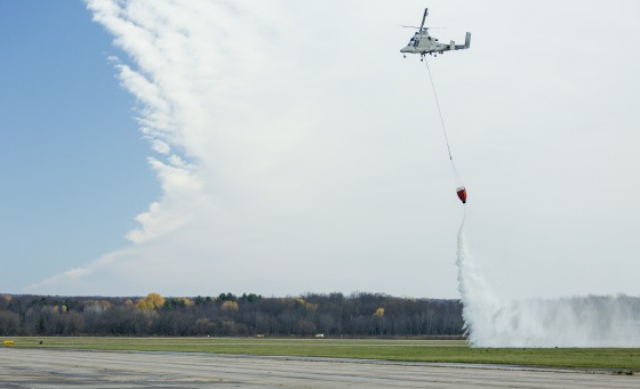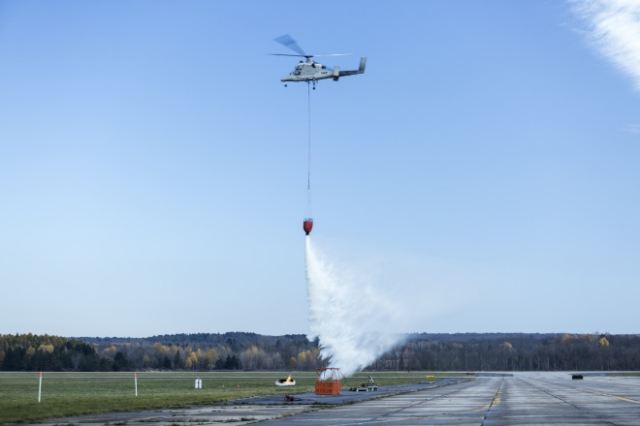A team of Lockheed Martin and Kaman unmanned aircraft successfully demonstrated its ability to aid in firefighting operations, the company announced.
During the demonstration, the Indago quad rotor effectively identified hot spots, and provided data to an operator who directed the unmanned K-MAX helicopter to autonomously extinguish the flames. In one hour, the unmanned K-MAX helicopter lifted and dropped more than 24,000 pounds of water onto the fire.
“The unmanned K-MAX and Indago aircraft can work to fight fires day and night, in all weather, reaching dangerous areas without risking a life,” said Dan Spoor, vice president of Aviation and Unmanned Systems at Lockheed Martin’s Mission Systems and Training business.
“This demonstration signifies the potential for adapting unmanned systems and their advanced sensors and mission suites to augment manned firefighting operations, more than doubling the amount of time on station,” said Neal Keating, Kaman Chairman, President and Chief Executive Officer.



The use of the K-MAX unmanned helicopter for fire fighting at night is a very interesting and realistic approach to solve the big operational lack of aerial firefighting that is to have capability to operetta at night.
From NITROFIREX we have a innovative concept to afford the same problem wit fixed wings RPAS. We really believe that the only way to afford the problem is to integrate modern available technologies to avoid the risky operations, to develop the capacity of transport more quantity of water in less time over the fire and be able to make H24 operation developing the capability of aerial fire fighting at night.
There are enough technologies to send the “curiosity” to Mars and leave there a couple of years running away alone, there are enough technologies to build the 787 passenger transport airplane or the F-35 fighter and we was able to send the man to the moon more than forty-five years ago but at night our forest burn away because no technological capacity has been developed for aerial fire fighting.
Something should be wrong¡¡¡. The technologies are already available, the necessity is urgent, ¿why not develops the necessary technological integration?.
Good luck for all fire fighters,